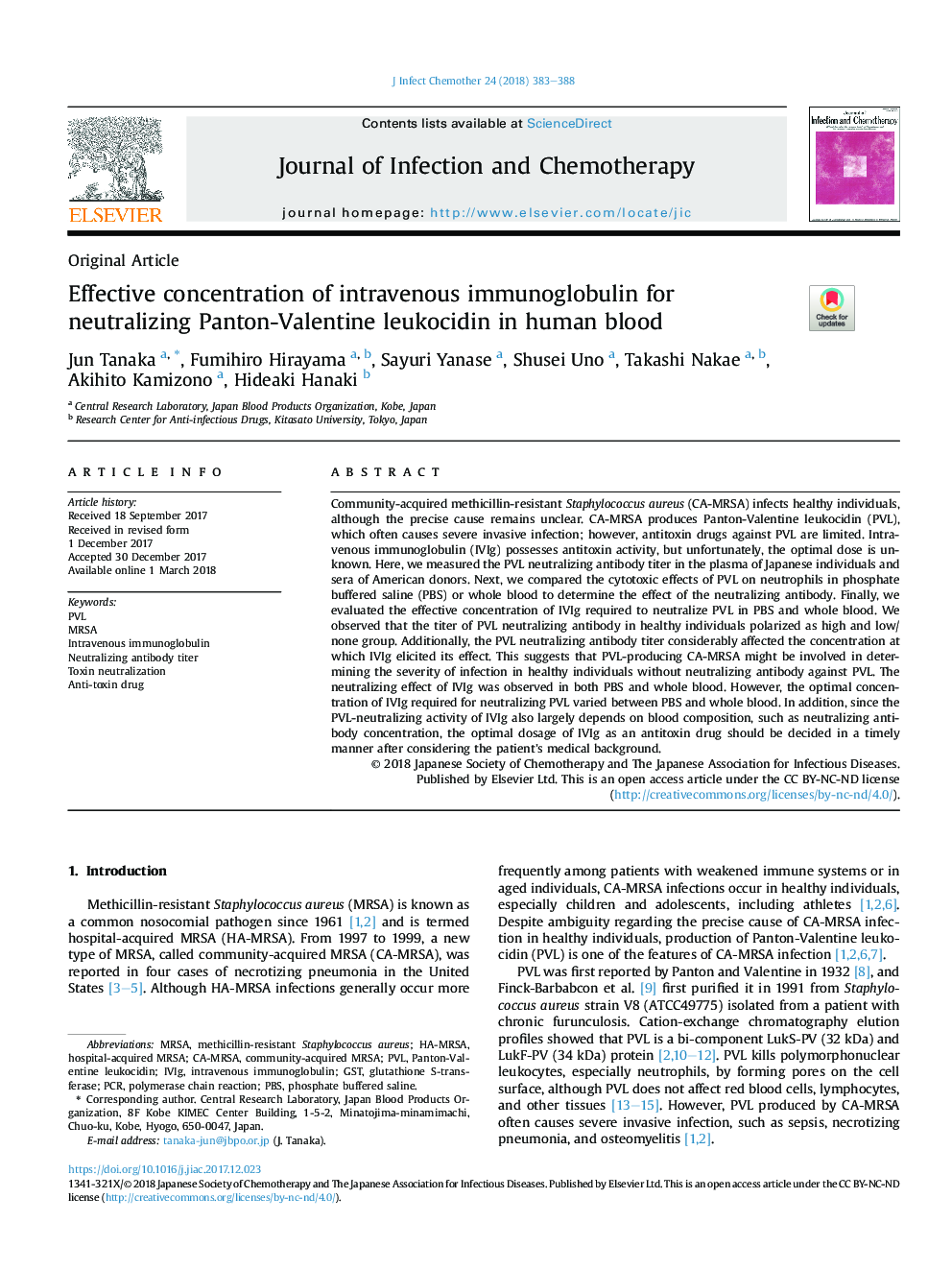| Article ID | Journal | Published Year | Pages | File Type |
|---|---|---|---|---|
| 8740659 | Journal of Infection and Chemotherapy | 2018 | 6 Pages |
Abstract
Community-acquired methicillin-resistant Staphylococcus aureus (CA-MRSA) infects healthy individuals, although the precise cause remains unclear. CA-MRSA produces Panton-Valentine leukocidin (PVL), which often causes severe invasive infection; however, antitoxin drugs against PVL are limited. Intravenous immunoglobulin (IVIg) possesses antitoxin activity, but unfortunately, the optimal dose is unknown. Here, we measured the PVL neutralizing antibody titer in the plasma of Japanese individuals and sera of American donors. Next, we compared the cytotoxic effects of PVL on neutrophils in phosphate buffered saline (PBS) or whole blood to determine the effect of the neutralizing antibody. Finally, we evaluated the effective concentration of IVIg required to neutralize PVL in PBS and whole blood. We observed that the titer of PVL neutralizing antibody in healthy individuals polarized as high and low/none group. Additionally, the PVL neutralizing antibody titer considerably affected the concentration at which IVIg elicited its effect. This suggests that PVL-producing CA-MRSA might be involved in determining the severity of infection in healthy individuals without neutralizing antibody against PVL. The neutralizing effect of IVIg was observed in both PBS and whole blood. However, the optimal concentration of IVIg required for neutralizing PVL varied between PBS and whole blood. In addition, since the PVL-neutralizing activity of IVIg also largely depends on blood composition, such as neutralizing antibody concentration, the optimal dosage of IVIg as an antitoxin drug should be decided in a timely manner after considering the patient's medical background.
Keywords
Related Topics
Life Sciences
Immunology and Microbiology
Applied Microbiology and Biotechnology
Authors
Jun Tanaka, Fumihiro Hirayama, Sayuri Yanase, Shusei Uno, Takashi Nakae, Akihito Kamizono, Hideaki Hanaki,
